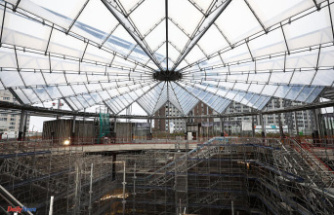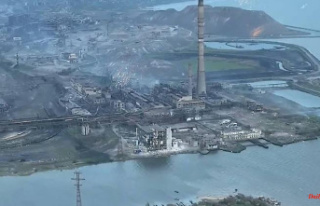Educational institutions will, from time to time, need to increase their building capacity to facilitate learning, sports and other activities. Sometimes, that extra space is needed in a very short timeframe and the schools may not have the luxury of time to build a new permanent structure (such as a traditional brick-and-mortar structure). Fortunately, temporary school buildings offer fantastic solutions when learning institutions need space urgently.
What are the various types of temporary school buildings?
The leading manufacturers of temporary buildings offer different types of structures for the education sector, and these include the following:
Temporary halls and classrooms
These are temporary school buildings that come in the form of industrial tents. They are quick to install — taking as little as 5 days to assemble — which can mitigate situations such as the loss of a building through fire or other urgent needs for space. The schools can easily have them installed over a mid-term break or the holidays.
· Temporary steel classrooms
Unlike the industrial tents, the temporary steel classrooms are secure and relocatable structures which are also fully insulated. They have better insulation compared to the tents and offer ideal spaces where people can work, dine, study or carry out other activities. They make excellent classrooms and sports complexes and are also ideal for many other facilities.
· Permanent steel-framed structures
These steel-framed buildings are L-2 compliant and can be perfect substitutes for brick-and-mortar structures because of their cost-effectiveness. The beauty of these buildings is that they can be customised to suit any use including learning spaces and many others, and can be installed within a short time.
What are the reasons to choose temporary school buildings?
Many institutions in the education sector, such as schools, colleges, universities and others are choosing to install temporary school buildings instead of constructing permanent structures. Below are some of the benefits of these kinds of buildings:
· Quick installation
With schools, time is of great importance and any disruption due to any issue or a higher-than-expected student intake can interfere with the school program and pose several challenges. Luckily, temporary school buildings are easy to install because they come in prefabricated sections that are then assembled quickly at the site. The education sector can rely on the temporary structures during sports activities and other events where there is an urgent need for extra space for a short time.
· Cost-effectiveness
Temporary school buildings cost a fraction of the amount that an institution would otherwise require to spend on constructing a permanent structure. They are designed and fabricated in the factories and then shipped to the sites where they are assembled within a short time. This process saves much of the cost of labour, buying materials and hiring heavy equipment and machines. The structures also do not need elaborate foundations thus saving even more money.
In addition, temporary structures are available in various arrangements including buying and hiring. If a school does not need it for a long period, it can simply hire them, saving on costs for constructing permanent structures that are only to be used for a short time. Those schools, universities or colleges that need to buy or hire temporary buildings can check out these details from one of the leading providers in the UK with over 30 years of experience and excellent customer service.
· Flexibility
A key advantage of temporary school buildings is that they are highly flexible, which is usually not the case with permanent structures. The users can easily expand or reduce their size as the need may be. It is possible to add extensions and connections between buildings and utilize almost all of the space available. As many of these structures do not need a foundation (except in some rare cases) it makes installing them so easy.
· Eco-friendly
Construction is something that causes so much damage to the environment due to excavation and leads to the use of non-renewable resources which further harms the environment. Luckily, installing temporary school buildings like the ones provided by Smart-Space helps to avoid the heavy use of machinery and equipment, as well as other things that harm the environment. The buildings are made with steel, tent covers or steel cladding and other materials that are reused over and over thus cutting the wastage of resources.
· Easy customisation
Temporary school buildings come in various layouts and can be tailored to meet the needs of any institution. The manufacturers can design them as per the user's needs, to be of a given size, colour and shape, and can be expanded in future to fit the users' growing needs.
Also, the temporary structures can be made to be of certain standards to match the school's status. And if they are intended for specific uses, they can be fitted with various additional things. These include internet equipment, water supply, and improved insulation or even storage equipment like racks, shelves and cold facilities.
· Easy portability
Depending on the use of the structures, the school may want to relocate the building after their need for it is over until it will be needed again. For example, sports complexes put up during sports competitions may not be needed after the event and need to be disassembled and stored until the next year. Schools may even hire them from the providers on a short-term basis and return them when no longer needed.
Educational institutions that have activities happening away from their established locations can also use these non-permanent structures, for example when hosting open days, sports and other activities.
The structures eliminate the need to build permanent buildings and ensure the schools have the space that fits their needs because they buy or hire temporary buildings that are suitable for them.
What are the various uses of temporary school buildings?
Temporary school buildings can serve many uses including:
· Classrooms
· Dining areas
· Sports complexes
· Storage for equipment, foods and other items
· Laboratories
· Workshops
Conclusion
Universities, colleges, schools and other learning institutions can use temporary buildings because they have so many benefits. They are quick to install, cost-effective, customisable, eco-friendly, flexible and easy to relocate and have many other advantages. Users can buy or hire them eliminating any need for large investments. The vital thing is to get them from reliable suppliers to enjoy the best results.












